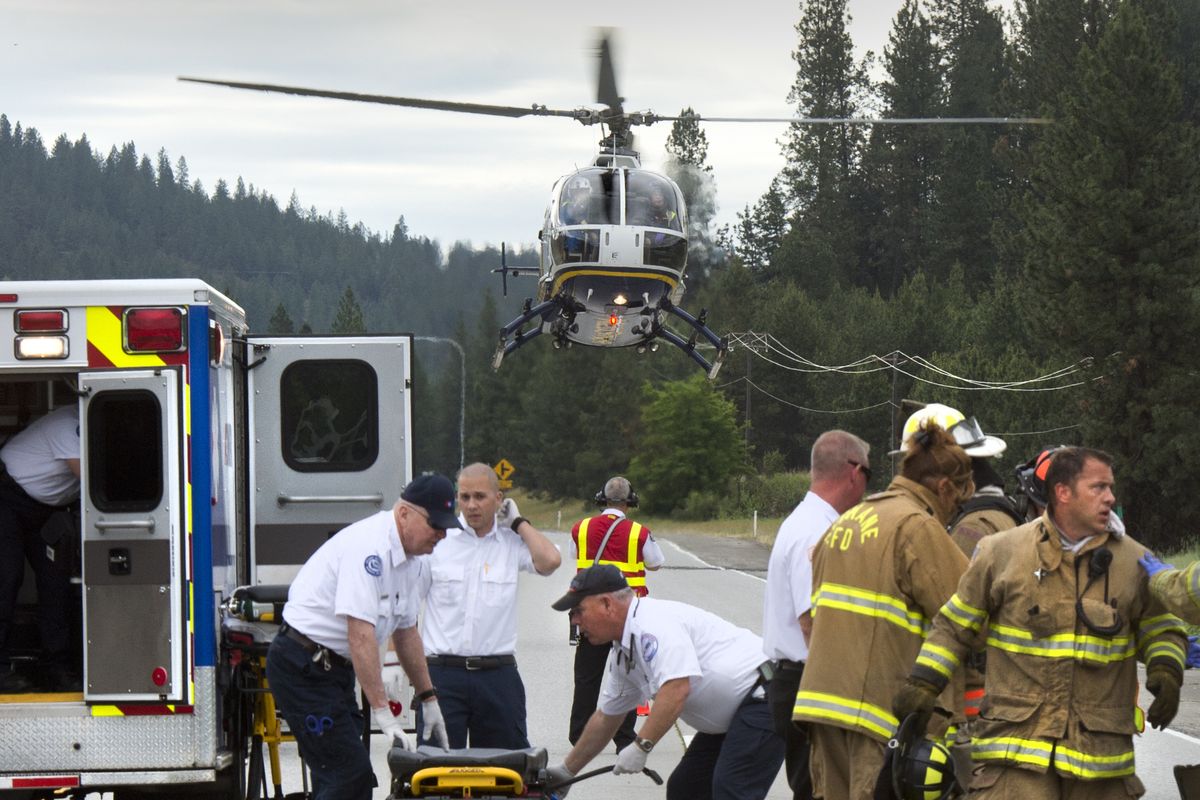EMTs need a helicopter? There’s an app for that
MedStar uses text messages, GPS

Last week when a Clayton, Wash., woman lost her balance, fell and suffered serious injuries, responders from Stevens County Fire Protection District 1 pulled out their smartphones and punched up the MedStar Alert application.
In seconds the app sent a text message to the Northwest MedStar communications center in Spokane, alerting dispatchers that a medical emergency would require a response.
After MedStar dispatchers texted back that a helicopter was available at Felts Field, the fire district crew confirmed that the woman required transport to a Spokane hospital. Based on the phone’s GPS, the text automatically relayed the specific coordinates for the woman’s home in a remote area between Clayton and Deer Park.
Within two minutes a helicopter was on its way.
In the pre-smartphone days, the fire district responders would use a handheld GPS unit and call their own dispatch operator with location coordinates, or try to call MedStar themselves if they were in an area with cellphone coverage.
Fire District Chief Mike Bucy said the MedStar Alert app simplifies those steps and speeds the response.
“We just send a text from the site and it relays the exact landing zone coordinates to them,” Bucy said.
If the responders on the ground need to change the landing location for MedStar, they simply move to another spot and send a new text, Bucy said.
Bucy is among several hundred area emergency medical responders who have downloaded the free app. He likes how it streamlines calls for rapid medical transport and sends back information, including how soon a helicopter or MedStar aircraft will arrive.
“It’s a major improvement over using radios to call or get help through calling and relaying the coordinate numbers by talking to someone by phone,” he said.
The app also provides a text-message connection in rural areas where limited coverage doesn’t allow phone calls, Bucy said.
Use of the app has increased since its release last year, said Nicole Stewart, a spokeswoman for Inland Northwest Health Services, the nonprofit agency that operates MedStar.
“We are seeing the MedStar Alert app being used two to three times each week, particularly during busier summer months,” Stewart said.
INHS hired a German software development company, Ritter Information Technology, to design the basic components of the app.
The app interface allows for texting between air crews and responders in the field. Since many tablets and smartphones have cameras, the app also lets users send photos of EKG tests, injuries and other circumstances.
Eveline Bisson, director of Northwest MedStar, said in a news release that the app’s key value is reducing the need for emergency responders to focus on landing zone location and lets them spend more time on patient care.
The app also allows first responders to download detailed guides to setting up a landing zone and how to prepare a patient for transport.
If MedStar transports a patient, the injured person pays the cost of the service. No payments are made to MedStar if critical care air transport is not needed.
If responders send an app alert but then decide MedStar doesn’t need to fly to a site, INHS regards that as helpful training for its crews.
“That’s a good thing. Putting us on standby (through an app alert) helps to reduce response times, if we are needed to launch,” Stewart said.